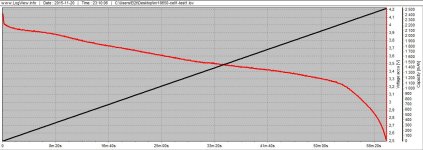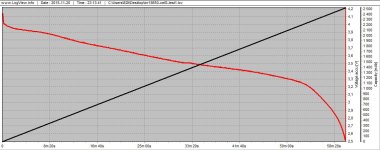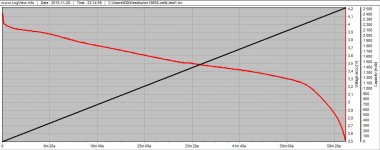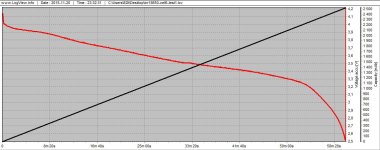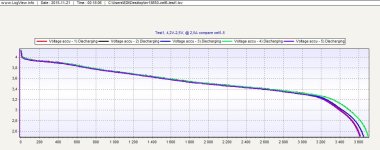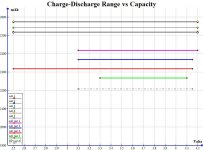We all know hitting the cells hard on discharge is going to have an impact on lifespan and it's definitely awesome to quantify the difference between several different discharge rates, however this testing is not that comparable to real world use. On my bike my load varies between 0.5c cruise and 3.5c peaks. Those peaks come at fairly random intervals and for varying, but usually short amounts of time. Pulse discharge testing cells consistently is a lot more complex but would be the ideal. This is not a criticism, just an observation.. loving the work you're doing.
One thing that I don't think has been quantified particularly well in other 18650 testing is the effects of fast charging independent of discharge rate. This could be tested by performing a 1c discharge for two cells, however vary the charge rate - perhaps 1.5a for the 'slow' charge' and the rated 4a maximum for fast. I appreciate these cycles will take quite substantially different times, however you probably don't need to do hundreds of cycles to establish trend data we can overlay on your long term testing. Unlike the discharge testing this is directly applicable to the real world scenario - you generally do charge at constant current!


